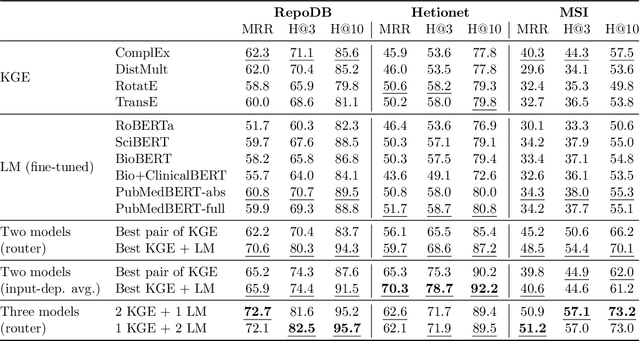Scientific Language Models for Biomedical Knowledge Base Completion: An Empirical Study
Paper and Code
Jun 17, 2021



Biomedical knowledge graphs (KGs) hold rich information on entities such as diseases, drugs, and genes. Predicting missing links in these graphs can boost many important applications, such as drug design and repurposing. Recent work has shown that general-domain language models (LMs) can serve as "soft" KGs, and that they can be fine-tuned for the task of KG completion. In this work, we study scientific LMs for KG completion, exploring whether we can tap into their latent knowledge to enhance biomedical link prediction. We evaluate several domain-specific LMs, fine-tuning them on datasets centered on drugs and diseases that we represent as KGs and enrich with textual entity descriptions. We integrate the LM-based models with KG embedding models, using a router method that learns to assign each input example to either type of model and provides a substantial boost in performance. Finally, we demonstrate the advantage of LM models in the inductive setting with novel scientific entities. Our datasets and code are made publicly available.
 Add to Chrome
Add to Chrome Add to Firefox
Add to Firefox Add to Edge
Add to Edge